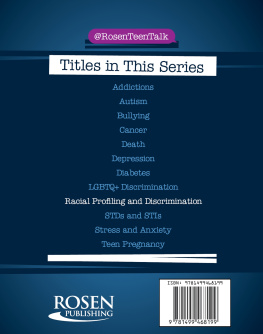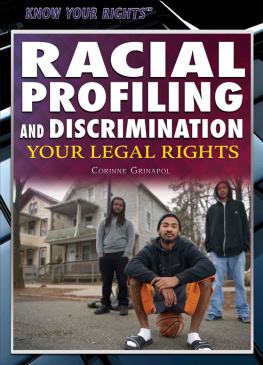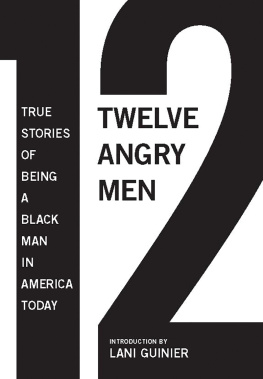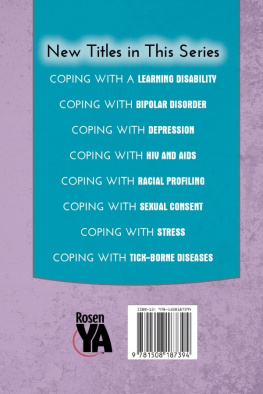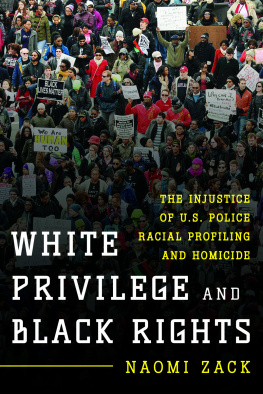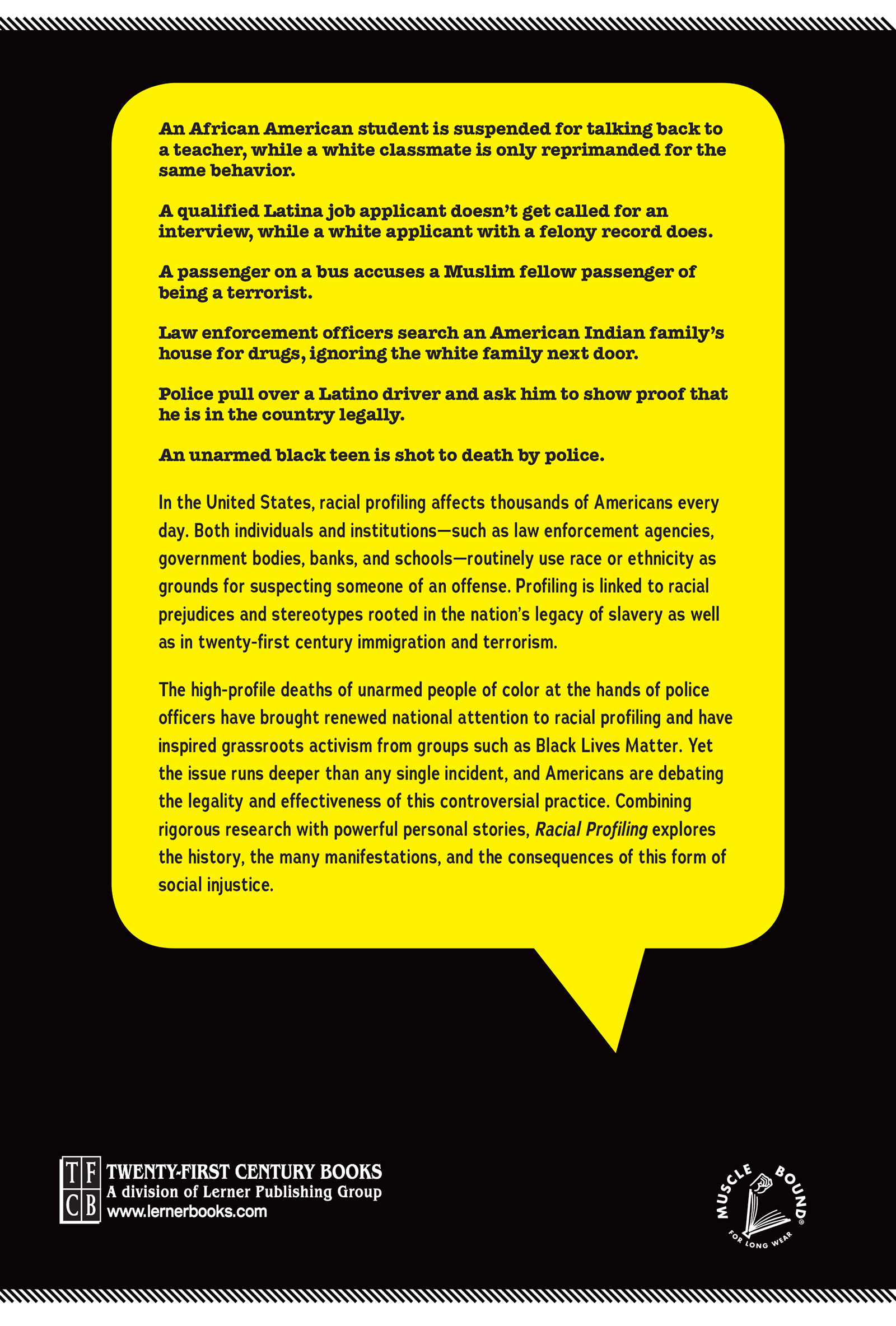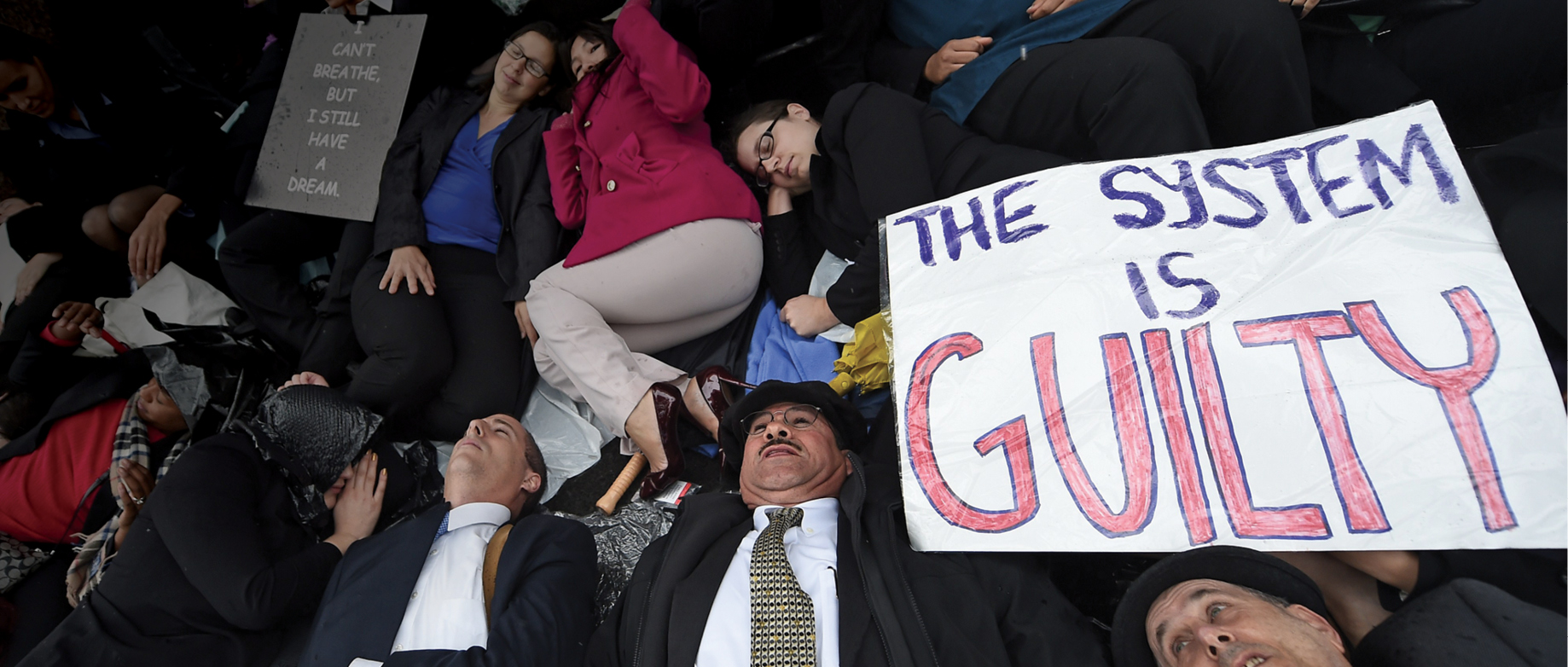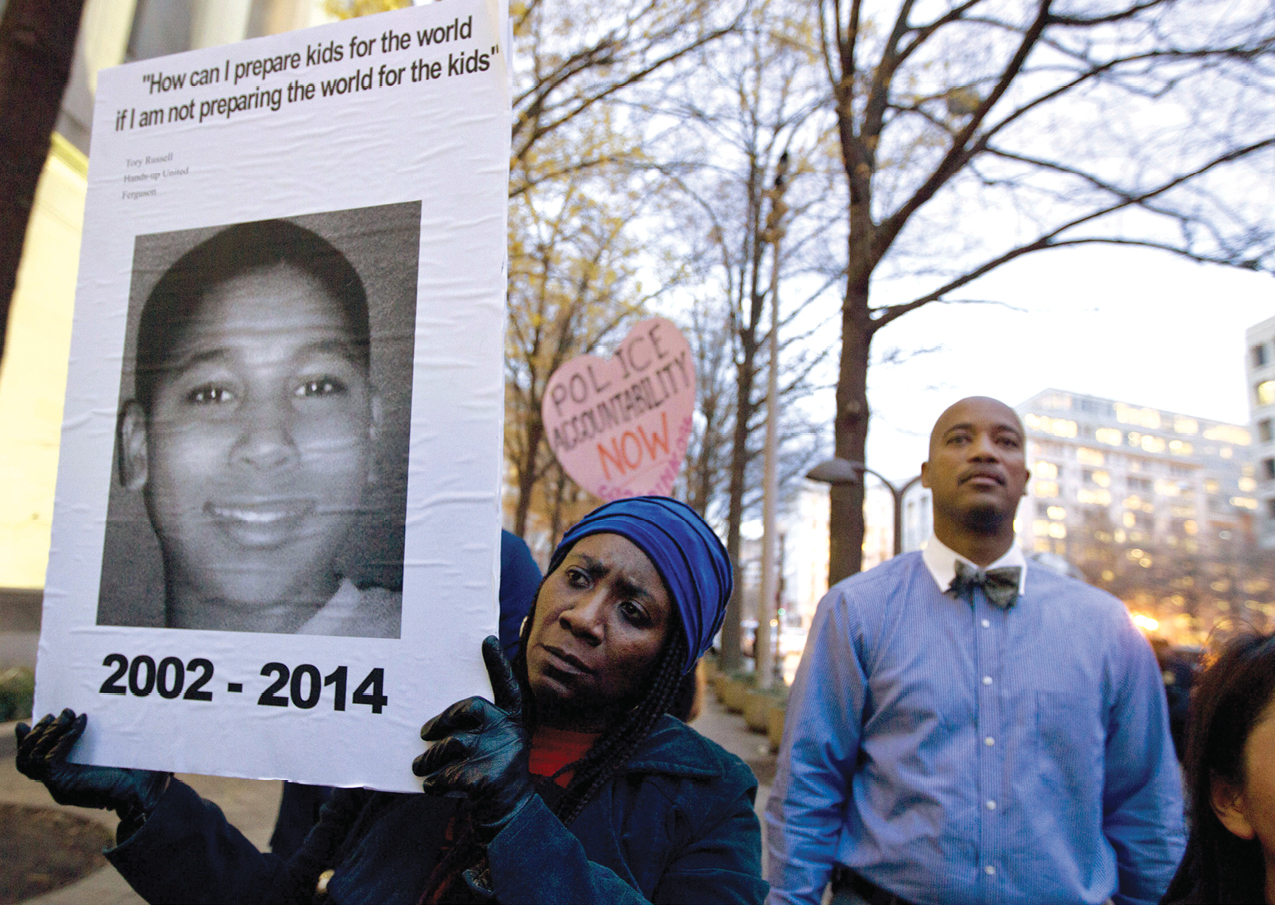Protesters in Los Angeles, California, stage a die-in demonstration to raise awareness about the fatal consequences of police brutality and racial profiling.
Chapter 1
Prejudice and Privilege
O n the afternoon of November 22, 2014, a concerned Cleveland resident called 911 and reported seeing a guy with a pistol at a local park. He added that the gun was probably fake and that the person holding it was probably a juvenile but that the situation was making the caller uneasy. Is he black or white? asked the 911 dispatcher. The caller responded, Hes black. The person in question was twelve-year-old Tamir Rice, who was carrying a BB gun.
Another dispatcher relayed the callers information to two police officers, without mentioning the callers impressions of Rices youth or his suspicion that Rices gun was fake. She designated the situation as a Code 1, the highest priority emergency level.
Security camera footage from the park shows that the officers squad car drove across the grass and pulled up to a gazebo, no more than 7 feet (2 meters) from where Rice was playing. Within two seconds, Officer Timothy Loehmann got out of the car and shot Rice once in the stomach. When Rices fourteen-year-old sister ran to help him, officers tackled and handcuffed her. Samaria Rice, Tamirs mother, also rushed to the park. She later recalled that the officers refused to let her through to her son. The police told me to calm down or they would put me in the back of the police car. Tamir died the next day in the hospital.
Demonstrator Tomiko Shine (center) holds a picture of twelve-year-old Tamir Rice (pictured) , who was fatally shot by police in Washington, DC, in November 2014. His death sparked widespread calls for police accountability in cases of racial profiling and police brutality.
Authorities initiated multiple investigations into Tamir Rices shooting death. A report released in June 2015 by the Cuyahoga County Sheriffs Department stated that, while the officers said they had shouted warnings to Rice before shooting him, no conclusive proof of any type of warning could be found. Nevertheless, in October 2015, two other reports conducted by outside reviewers concluded that Loehmann had acted reasonably in deciding to fire his weapon. And in December 2015, a grand jury ruled that Loehmanns actions were justified and that he would therefore not face criminal charges. Janai Nelson of the National Association for the Advancement of Colored People (NAACP) Legal Defense Fund blamed several related factors for the legal outcome, saying, Rices death and the lack of accountability for it are a result of racial profiling, incompetent 911 services, over-zealous and reckless policing practices, and a systemic bias in favor of police.
Everyday Indignities
Racial profiling was not the sole cause of Tamir Rices death at the hands of police officers. Yet it plays a crucial role not only in Rices tragic fate but in numerous other American lives. In the United States, racial profiling is both an everyday reality for many Americans and a hot-button issue in the national conversation about race, policing, and justice.
So what is racial profiling? The American Civil Liberties Union (ACLU), an organization that advocates for individual rights and freedoms, defines it as the discriminatory practice by law enforcement officials of targeting individuals for suspicion of crime based on the individuals race, ethnicity, religion or national origin. Amnesty International USA, an organization that campaigns for human rights, uses a similar definition, although it clarifies that profiling can be appropriate if there is trustworthy information, relevant to the locality and timeframe, that links persons belonging to [certain groups] to an identified criminal incident or scheme. In the United States, racial profiling typically targets African Americans, as well as people of Latino (or Hispanic), Middle Eastern, American Indian, and Asian descent. Muslimsfollowers of the religion of Islamalso frequently encounter profiling, as do other people who are perceived to be Muslim based on their appearance and perceived racial backgrounds.
At its most basic level, racial profiling assumes a connection between a persons racial or ethnic background and the likelihood that the person is prone to criminal behavioror otherwise deserving of distrust. Profilerswho may include police officers, security officials, prison guards, bankers, lawyers, and average citizensreact to the person based on this assumption. Depending on the situation, the expression of racial profiling can vary widely, from a suspicious look or an aggressive comment to denial of a loan, rejection of a job application, arrest, incarceration, harassment, physical injury, and death.
Americans disagree on how often profiling occurs in the United States. At some levels of law enforcement, official policy explicitly permits racial profiling. For instance, federal agents may legally consider race and ethnicity when stopping travelers at airports, border crossings, and immigration checkpoints. Federal guidelines also allow the Federal Bureau of Investigation (FBI) to use the ethnic makeup of neighborhoods as a basis for targeting investigations and recruiting informants. Twenty out of fifty states have no laws banning racial profiling by police. Even in settings where the practice is prohibited, racial profiling can occur unofficially, and it is difficult for victims to prove that they have been targeted. On a case-by-case basis, observers frequently disagree on whether an individual incident shows definitive evidence of racial profiling. For example, Lieutenant Steve James, president of the Long Beach Police Officers Association in California, insists that his fellow officers never engage in the practice. There is no racial profiling. There just isnt. He goes on to clarify that there is criminal profiling,the identification of a suspect in a specific crime based on a witnesss description of the criminal.




